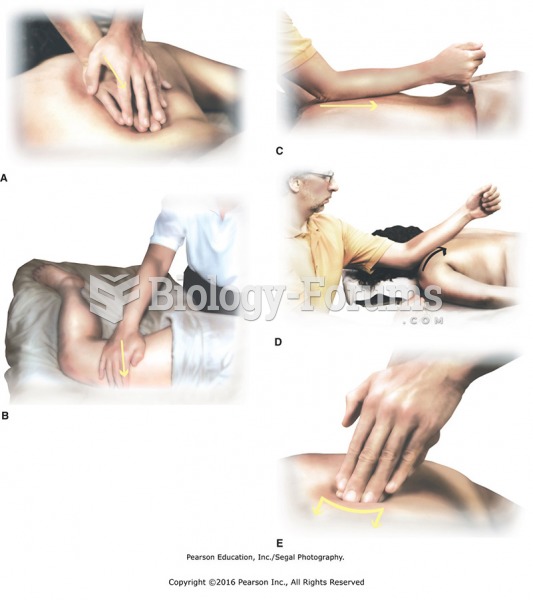Answer to Question 1
True
Answer to Question 2
The drug azidothymidine (AZT) has been found to delay the progress of the disease in some people. First synthesized in 1964 and initially developed as a cancer drug, AZT helps to extend life and provide hope. It does not cure AIDS, and there are some serious side effects with the drug. AZT or Retrovir (its brand name) must be taken every 4 hours both night and day. People often experience very uncomfortable side effects. These include nausea, headaches, anemia, lowered white blood cell counts, liver function changes, kidney effects, and bone marrow damage. The longer the drug is taken, the more likely the person is to experience side effects with increasing severity. Additionally, the drug is very difficult to manufacture, involving 17 chemical steps plus 6 more steps to make it marketable. The result is scarcity and high costs. Nonetheless, the existence of a drug that at least can delay the effects of such a devastating disease has provided hope and has fought the black curtain of pessimism that has shrouded AIDS. Other drugs to combat the AIDS virus are being developed. In 1991, the Food and Drug Administration approved didanosine (DDI) for treatment of adults and children with advanced AIDS who cannot tolerate or are not helped by AZT. In 1995 and 1996, the Food and Drug Administration approved several drugs called protease inhibitors, which fight HIV by snipping an enzyme the virus needs before it can infect human blood cells. Combining AZT with some of these protease inhibitors is delaying substantially the progression of AIDS in people who are HIV infected.
In recent years another class of drugs called nonnucleoside reverse transcriptase inhibitors (NNRTIs) has been added to the arsenal of HIV drugs. Patients now mix and match these drugs in complicated, individually tailored combinations. These cocktail drugs are not cheap, costing 14,000 to 20,000 a year per patient.







